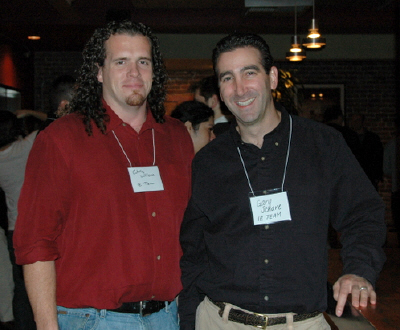What comes after IE 7?

While attending the launch party for IE 7 last night around the corner from our ZDNet offices, I asked Gary Schare, director IE product management, what's coming next for Microsoft's browser. Before he addressed that question, he told positioned IE 7 as a "no-brainer" upgrade for IE 6 users for its security and new features. Given that most reviewers don't believe that IE 7 will convince Mozilla users to switch, an IE 6 upgrade is the appropriate characterization. The next milestone is to finish up the Vista version, which Schare said is in its final stages.
What he termed "IE Next"--which he said could be IE 7.5, 8.0 or a new name, although he backed off the latter--hasn't been spec'd out. Schare said his team is listening to the users to find out what they want, but hasn't yet aggregated the feedback. Improvements to the user interface, more support for Web standards and staying ahead of the hackers are the general areas of focus, he noted.

Chris Wilson, platform architect for IE Next and Gary Schare, IE director of product management
The posture or reality of not knowing more specifically what is coming in IE Next is old company think. The upstarts, including the Mozilla Foundation, are aggressive and public about talking up new feature requests and product goals, providing rolling roadmaps that give users a sense of the future and even participation in the process. It's not just an open source community principle.
Schare expects IE Next to show up in about 18 months. About a year ago, Microsoft CEO Steve Ballmer defined three twitch cycles or product delivery cadences. Services, such as MSN, are on a nine month, short twitch cycle and more substantial products, like IE and Office, are on an medium, 18 to 24 month cycle. Major transitions, such Vista and WinFS, are on a long twitch cycle, years and years.